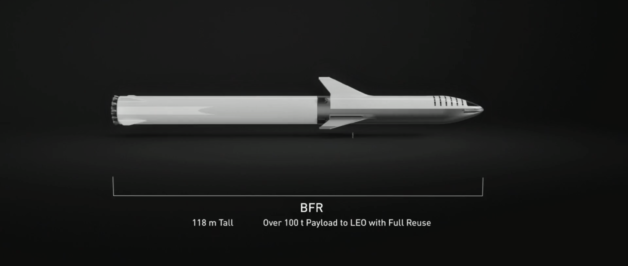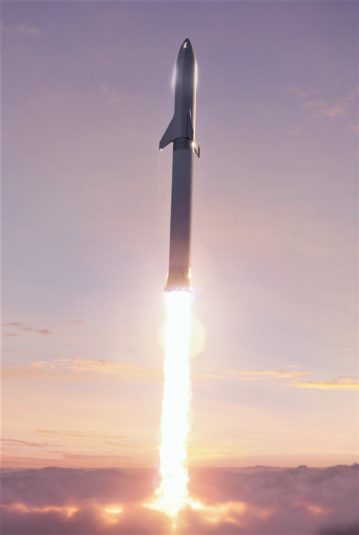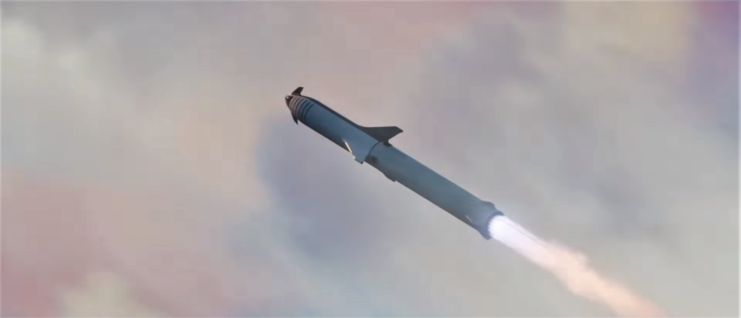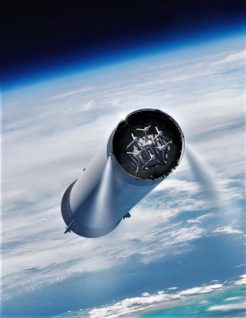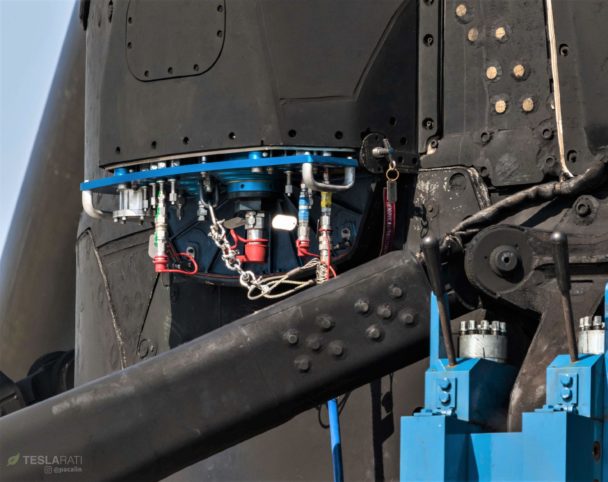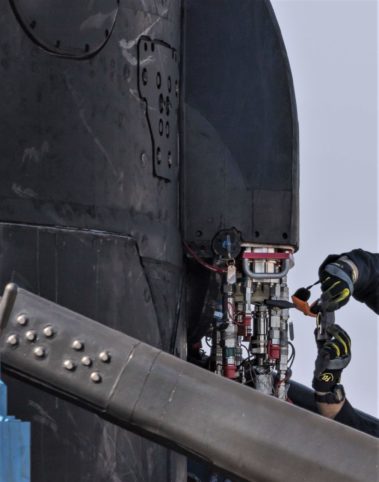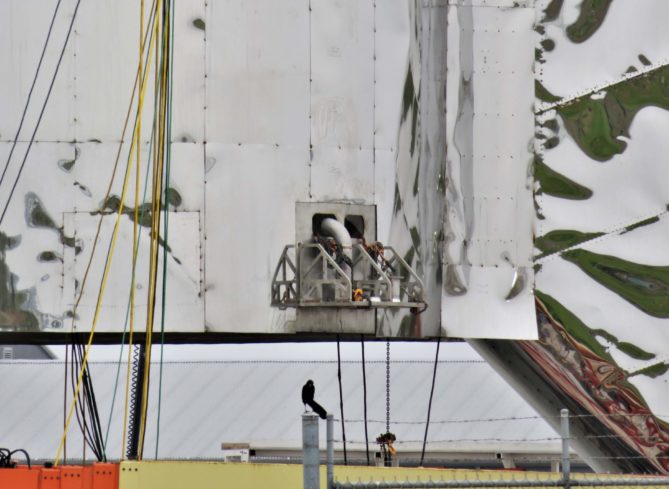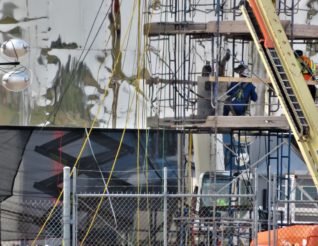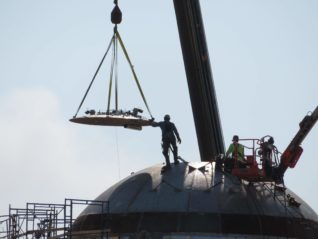
As SpaceX’s South Texas operations continue full steam ahead in pursuit of the first integrated hop tests of a full-scale Starship prototype, the company’s Starhopper and its complementary launch/hop pad are dramatically and visibly evolving on a daily basis.
This week’s progress has been signified by the installation of familiar rocket hardware on the Ship and a burst of construction – centered around pipelaying, plumbing, foundation work, and berm-building – at its pad. Just a few hundred miles north of Boca Chica, SpaceX’s team of propulsion engineers and technicians reached their own dramatic milestone, conducting the first static fire of a finalized version of the Raptor engine set to power Starship and Super Heavy (formerly BFR).
2-4-2019#SpaceX #TheFuture pic.twitter.com/0YBxk5QXD3
— Austin Barnard (@austinbarnard45) February 5, 2019
A pad fit for a Starhopper
In the last ~10 days alone (Jan 24-Feb 4), SpaceX pad construction workers and contractors transformed the former dirt mound from a generally flat, planed surface with a spattering of shipping containers and building materials into a hive of welding rigs, propellant and water tanks, major plumbing progress, shaped earth, and the beginnings of new concrete foundations. Thanks to local student Austin Barnard’s reliable drone photography, that pad-specific progress can be more properly visualized.


Taken on January 24th and February 4th respectively, the devil is definitely in the details when it comes to SpaceX’s prospective Starhopper pad development. Most notable is the progress made with the rapidly developing propellant plant and ground systems infrastructure in the left half of the images, marked by hundreds of feet of freshly-installed piping meant to support the process of fueling Starhopper with liquid methane and oxygen. For a rocket as powerful as Starhopper (even with just three Raptor engines), cooling both the propellant and the concrete launch and landing pad is no less important, visible in the shape of three large water tanks (lefthand foreground) and a smaller radiator stack (just to the right of two taller, skinnier white tanks.
Aside from the rapid rise of the first BFR propellant farm and its supporting equipment, SpaceX has progressed into the installation of a trio of concrete foundations just to the right of the dirt berm and propellant tank area. Standing as close as it is to said propellant tanks, it seems unlikely that the new foundation-laying is related to the pad (or a stand) meant to support early Starhopper hop tests, although SpaceX’s Falcon 9-era Grasshopper and F9R hop test vehicles operated about the same distance from its propellant infrastructure. SpaceX’s South Texas site also features a sort of satellite pad at its east end (the right side in attached photos) that could have a future as an integration hangar or a secondary landing zone to allow for Starhopper to perform divert tests.
Depending on whether SpaceX actually intends to develop the land shown above into an actual full-scale launch facility for BFR (Super Heavy and Starship), it could also remain generally unchanged until Starhopper’s hop test program has been run to completion, at which point everything seen above would likely be rebuilt from scratch to accommodate for any drastic changes in function. SpaceX’s Boca Chica might simply be too small to support a pad capable of launching Super Heavy (nearly twice as powerful as Saturn V at full thrust), measuring in at considerably less than ~10 acres of usable area compared to LC-40’s ~20 acres and Pad 39A’s ~50+ acres. CEO Elon Musk has also hinted at using a giant floating platform for early orbital BFR launches, although that might prove even harder (and more costly) than building a traditional land-based pad.
Becoming a rocket
Meanwhile, the aft engine/fin/tank section of SpaceX’s Starship prototype (unofficially nicknamed Starhopper) has experienced a stream of hardware additions and improvements, modifying its relatively awkward and unfinished steel base with what appear to be Falcon 9-sized quick-disconnect umbilical panels, a functional propellant tank header, and mounting hardware for carbon-overwrapped pressure vessels (COPVs). By using hardware that is proven and easy to manufacture, SpaceX can save a huge amount of time that would otherwise need to be spent engineering subassemblies that (at risk of undervaluing the challenge) are generally known-quantities – more a matter of time and effort than an actual technical hurdle.
While they are clearly still in a rough, unfinished form, Starhopper’s umbilical panels are already easy to recognize when compared alongside Falcon 9’s iconic red and blue panel pairs. In essence, whereas Starhopper has been a largely unknown quantity with no familiar aspects since it began to come together late last year, the Starship prototype has recently had hardware installed that is finally revealing subtle SpaceX signatures in its design and assembly.
Check out Teslarati’s newsletters for prompt updates, on-the-ground perspectives, and unique glimpses of SpaceX’s rocket launch and recovery processes!


